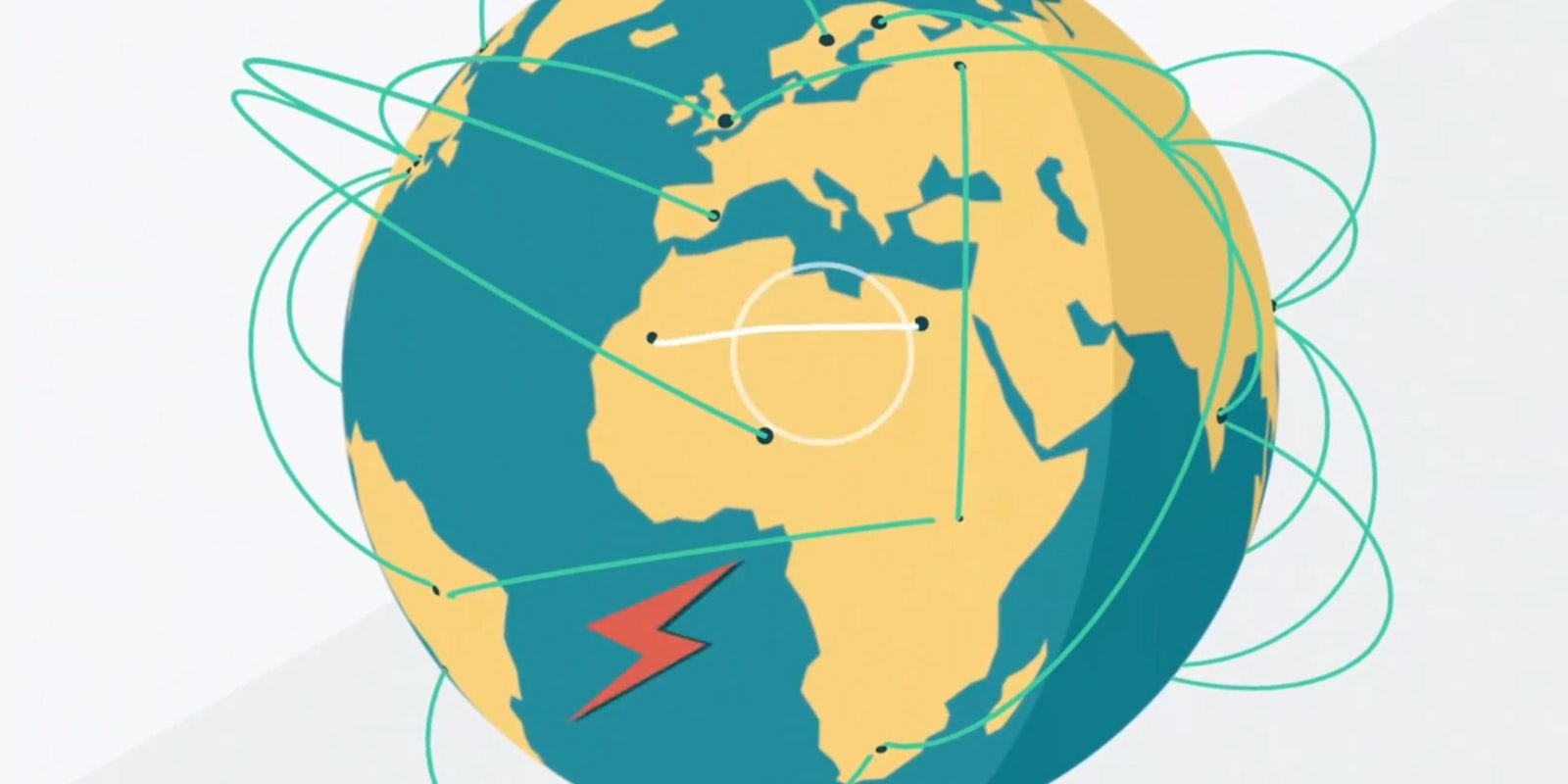This week, Google released the Digital Attack Map, to graphically visualize distributed denial of services (DDoS) attacks across the world.
DDoS are increasingly popular electronic attacks that employ automated information requests, which overtax the server of a company or organization. They have become more well-known through the work of the hacktivist collective Anonymous, which has used them to protest against PayPal, for instance, when that company pulled the account being used to raise money for WikiLeaks’ Julian Assange.
As cyber attacks in general have become better known, DDoS attacks get more mentions in the press, but most people still do not know how common they are or who gets targeted by whom. This map shares that information in an easily digestible form.
The map was launched in conjunction with the Conflict in a Connected World summit, co-sponsored by Google Ideas, the Council on Foreign Relations, and Gen Next Foundation.
Google Ideas calls itself a “think/do tank,” devoted to adapting technology to help people “confront threats in the face of conflict, instability or repression.” They put users, topic experts, and engineers together to develop technology-driven initiatives like the Digital Attack Map and uProxy.
The Digital Attack Map gives you an overview of DDoS attacks globally. Not surprisingly, the U.S. takes the lead in number of attacks, followed by China, France, and Brazil. But it can also give you day-by-day views to track specific attacks. You can also choose a date range to watch an historical attack. A news column matches the time period to help explain what is happening.
Aug. 8, for instance, was a landmark day for DDoS attacks against the U.S. The map shows the intensity and the source, China. The news feed explains that this Aug. 8 was the date of a major attack on the Citizens Bank.
The map also provides quite a bit of specific attack information, including type of connection used, bandwidth used, fragmentation, whether the source is known or unknown, and whether the attack is internal to a country or country-to-country.
But perhaps the easiest way to get started is recent history. You can watch yesterday’s DDoS attacks here.
H/T TechPresident | Screengrab via Google Ideas/YouTube


